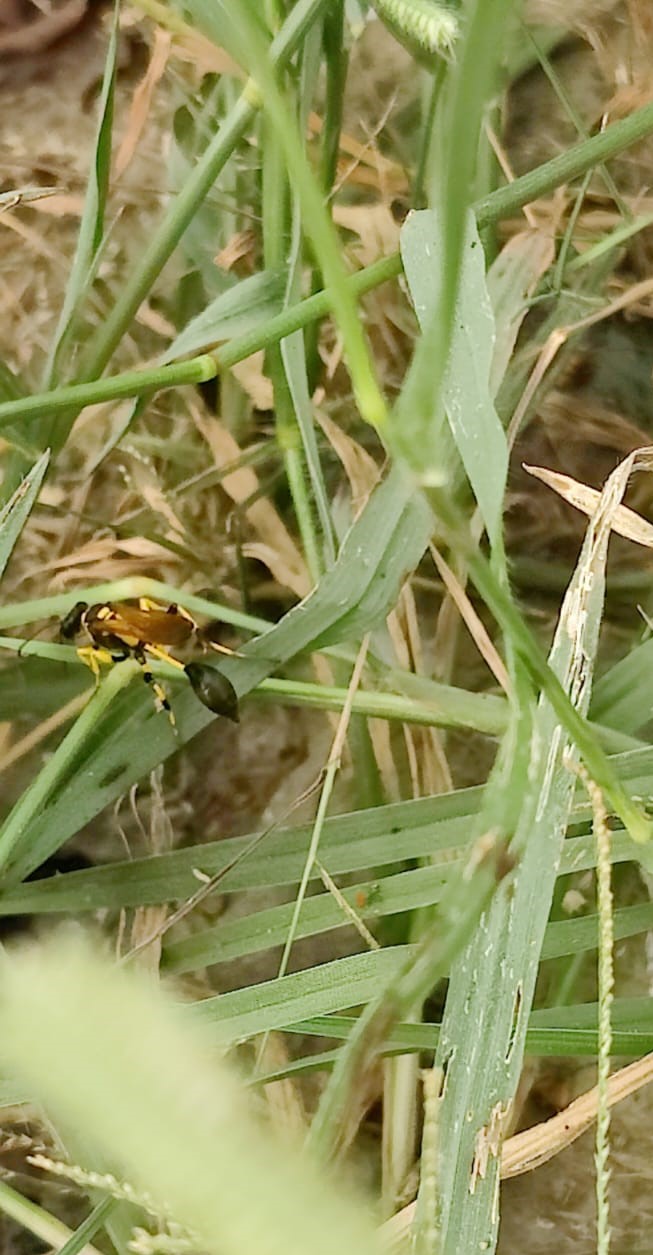wasps
Species
Families
Local Names
Genus
Native/Introduced
DNA Barcode
Description
Sceliphron caementarium, also known as the yellow-legged mud-dauber wasp, black-and-yellow mud dauber (within the US), or black-waisted mud-dauber (outside of the US), is a species of sphecid wasp. There are some 30 other species of Sceliphron that occur throughout the world, though in appearance and habits they are quite similar to S. caementarium.
The Latin species name caementarius means mason or builder of walls. S. caementarium is widespread in Canada, the United States, Central America and the West Indies, and has been introduced to many Pacific Islands (including Australia, Hawaii, and Japan), Peru and Europe, where it has become established in some countries of the Mediterranean Basin Croatia, France and Corsica, Italy, Cyprus, Malta, the Canary Islands, and Madeira and Austria, and Ukraine. This species is found in a wide variety of habitats, such as rock ledges, man-made structures, puddles and other water edges, cypress domes, in long leaf pines (Pinus palustris), and in turkey oaks.
The black and yellow mud daubers are solitary parasitoid wasps that build nests out of mud. These sphecid wasps collect mud balls at puddle and pool edges for constructing nests. Frequently, nests are built in shaded areas inside formations that are sheltered from the weather or from other environmental elements. These sites may be naturally occurring, or man-made structures. Some examples are under and inside various types of bridges, barns, garages, open-air porches, or under housing eaves. The nests comprise up to 25 vertically arranged, individual cylindrical cells. After initial creation and covering of the clutch, this sphecid wasp uses more mud as a means covering and protecting the whole cluster of cells, thereby forming a smooth appearance, and a uniform nest. The entire nest may attain an area equal to, or larger than, the size of an average human fist. After building a cell of the nest, the female wasp captures several spiders. The captured prey is stung and paralyzed before being placed in the nest (usually 6-15 per cell), and then a single egg is deposited on the prey within each cell. The wasp then seals the cell with a thick mud plug. After finishing a series of cells, she leaves and does not return. While consuming the prey and increasing in size, the larva molts several times, until it molts into a pupa. Once the pupa has developed into an adult wasp, the adult emerges from its pupal case and breaks out of its mud chamber.
Adults can be seen in mid-summer feeding on nectar at flowers, especially Queen Anne's lace (Daucus carota), parsnips and water parsnips (Sium suave, Sium latifolium, Berula erecta). They have a low reproductive rate. Stings are rare due to their solitary and usually nonaggressive nature; however, nests are aggressively defended.
A common species of cuckoo wasp, Chrysis angolensis, is frequently a cleptoparasite in Sceliphron nests, and is only one of many different insects that parasitize these mud daubers.









































































































































